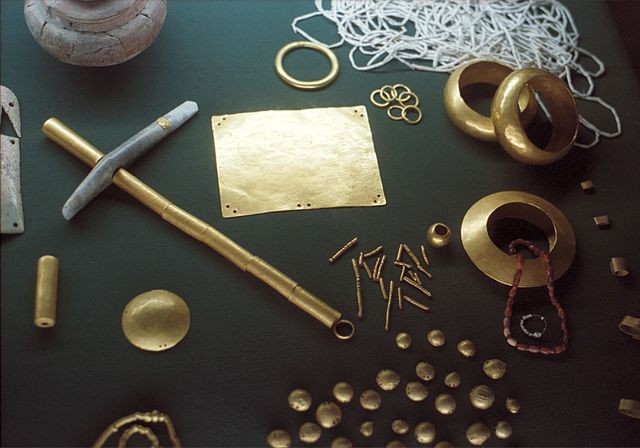
(Photo: Wikimedia Commons/Zde)
Scientists were able to create a thin sheet of gold. The product, considered to be graphene's newest metallic cousin, is called golden.
What Is Goldene?
The gold sheet exhibits exotic properties like those found in two-dimensional materials. According to materials physicist Lars Hultman of Linköping University in Sweden, it could someday allow scientists to use less gold in electronics and chemical reactions.
Goldene holds promise as a fantastic catalyst because, according to Hultman, it's far more financially feasible than thicker, three-dimensional gold. Goldene is only one atom thick.
"You don't need as many gold atoms to get the same function," he added.
Gold becomes a part of a rarefied group of elements that have been fashioned into 2-D sheets, such as phosphorus and carbon. According to Hultman, it is easier to manufacture two-dimensional sheets of nonmetal materials, such as carbon-based graphene, than to prepare two-dimensional sheets of metals, like iron and gold. Atoms in gold are typically arranged into clusters as opposed to flat sheets.
Hultman and associates initially synthesized a three-dimensional substance known as titanium gold carbide, which comprises two-dimensional gold sheets in its structure. The surrounding material was then removed using a potassium-based solution, leaving goldene in its place.
Hultman said they were able to free goldene. However, the challenge was when it was set free, it began to coil up into a scroll.
The group had to add a surfactant to the etching mixture so that the goldene sheets would stay flat.
As per coauthor Shun Kashiwaya, a materials scientist at Linköping University, the team aims to utilize an analogous etching technique to fabricate two-dimensional sheets of alternative metals such as platinum and iridium.
ALSO READ: Kourtney Kardashian Drinks Breast Milk After Feeling Sick; Can Liquid Gold Boost Your Immunity?
Gold Nanocrystals May Reverse Neurological Disabilities
In related news, gold nanocrystals exhibit encouraging outcomes in neurodegenerative illnesses like Parkinson's and multiple sclerosis (MS). The novel nanomedicine may help millions of Americans with the same illness.
Eleven MS patients with relapses and thirteen Parkinson's patients were enrolled in two phase two clinical trials in one study supported by Clene Nanomedicine. The subjects' baseline levels of important energy metabolites in their brains were initially determined using an MRI scanner. Put differently, the levels of energy generation in the brain can be inferred from molecules.
The individuals received a daily dose of gold nanocrystals for the next twelve weeks, after which they underwent another brain scan. Compared to baseline levels, patients with Parkinson's disease showed an average 10.4% rise in key indicators for energy metabolism.
Additionally, patients reported having better motor function, which may indicate that the intervention lessened some of the disease's functional symptoms. No negative side effects were noted.
"We are cautiously optimistic that we will be able to prevent or even reverse some neurological disabilities with this strategy," said neurology professor Peter Sguigna.
The researchers worked with Clene Nanomedicine for the study. Clebe Nanomedicine develops nanocrystals as a medication that can be used orally to treat neurodegenerative illnesses.
RELATED ARTICLE: Mystery of Gold's Glow: Energy Scientists Unveil the Quantum-Mechanical Effects of Photoluminescence From Crystalline Metal Films
Check out more news and information on Gold in Science Times.


![Some Brain-Injured Patients Who Died After Life Support Was Withdrawn May Have Survived, Recovered Some Level of Independence 6 Months After Injury [Study]](https://1721181113.rsc.cdn77.org/data/thumbs/full/53613/89/56/50/40/some-brain-injured-patients-who-died-after-life-support-was-withdrawn-may-have-survived-recovered-some-level-of-independence-6-months-after-injury-study.jpg)











